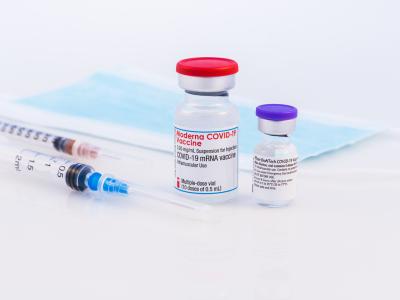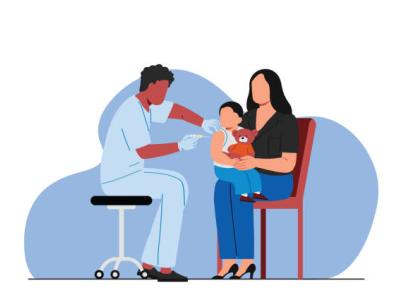World Economic Forum warns of future risk, costs from waterborne AMR
A new report from the World Economic Forum predicts a future of rising risks and costs from waterborne antimicrobial resistance (AMR).
The report, published in collaboration with the Swiss Agency for Development and Cooperation, lays out the various drivers of AMR water pollution—hospital and community waste, food production, antibiotic manufacturing, and poor wastewater treatment—and the environmental and socio-economic factors that increase the risk associated with waterborne AMR.
With human and veterinary antimicrobial use expected to rise 28% and 50% by 2030, respectively, and antibiotic manufacturing to grow in response to this demand, the groups predict that waterborne AMR levels will climb, and the resulting human and economic costs will be highest in low- and middle-income countries where sanitation is poor and access to clean water is limited.
Among the impacts from higher levels of waterborne AMR will be increased disease burden, increased medical costs, additional costs to the wider economy due to reduced labor supply, and loss of livestock value from higher animal mortality rates.
"If these trends are left unchecked, the impacts will be severe and unaffordable in many countries," the report states. "Analysis for this study projects the effect of AMR pollution in water on the duration and quality of life up to 2050 to be equivalent to 25% of the total global burden of malaria and tropical diseases and more than the combined annual burden of conflict and terrorism, maternal disorders and natural disasters. Standard approaches to monetising these impacts value them at $340-680 billion per year."
The report estimates, for example, that an outbreak of drug-resistant cholera in Bangladesh, where only 35% of the population has access to hand washing at home and only 48% have access to sanitation, could double caseloads and significantly raise fatality rates.
The authors conclude that the scale and interconnectedness of waterborne AMR calls for a comprehensive, multisectoral response that includes expanded wastewater treatment and improved access to clean water, regulatory and incentive measures to promote prudent antibiotic use and responsible antibiotic manufacturing practices, and better data to improve understanding and monitoring of risk.
Aug 27 World Economic Forum report
Australian antibiotic use declining, but appropriateness still a problem
A new report from the Australian Commission on Safety and Quality in Health Care (the Commission) shows that community antimicrobial use has declined in Australia over the last few years, but inappropriate use remains an issue.
The fourth Australian report on antimicrobial use and resistance in human health (AURA 2021) shows that, in 2019, more than 10 million Australians (40.3%) had at least one antimicrobial dispensed. While age-standardized community antimicrobial prescribing rates in Australia have declined since 2015, the country continues to prescribe antimicrobials at a higher rate than most European countries and Canada. Furthermore, in 2019, more than 80% of patients diagnosed as having acute bronchitis or acute sinusitis—two conditions for which antimicrobials are not recommended—received an antimicrobial prescription.
"It is extremely concerning that AURA 2021 shows that many patients continue to be prescribed antimicrobials for conditions for which there is no evidence of benefit," John Turnidge, MBBS, the Commission's AURA senior medical adviser, said in a Commission press release.
The report also shows a continuing gradual increase in the volume of hospital antibiotic use since 2015, along with little improvement in the overall appropriateness of prescribing in various settings, including hospitals and nursing homes. Inappropriate antimicrobial use remained high for chronic obstructive pulmonary diseases, non-surgical wounds, and surgical prophylaxis.
Analysis of national antimicrobial resistance rates shows that resistance for many priority pathogens has not changed substantially since the last AURA report in 2019, with the exception of Escherichia coli, which is showing increasing resistance to common agents. In addition, community-associated clones of methicillin-resistant Staphylococcus aureus have become more widespread nationally.
The report calls for enhanced surveillance for important resistant organisms, strategies to address the lack of improvement in appropriate prescribing, and more accessible resistance data for healthcare providers.
Aug 27 AURA 2021 report
Aug 27 Commission press release
Antimicrobial stewardship intervention in sepsis patients found effective
Early intervention by an antimicrobial stewardship (AMS) team in patients being treated for sepsis improved the appropriateness of antimicrobial therapy, according to the results of a clinical trial published last week in JAC-Antimicrobial Resistance.
In the randomized controlled trial, conducted at a hospital in Melbourne, Australia, from February to August 2018, 90 patients who had a medical emergency team (MET) call for suspected sepsis were assigned 1:1 to either standard care (management of antimicrobial therapy by the treating team) or early intervention (AMS review of antimicrobial therapy within 48 hours of the MET call). The primary outcome was appropriateness of antimicrobial therapy 72 hours after the MET call, as determined by a panel of blinded infectious diseases physicians.
Previous research has indicated that approximately 50% of patients with suspected sepsis received prolonged antimicrobial therapy with unnecessarily broad-spectrum agents. While other trials have found that stewardship interventions can improve the appropriateness of antimicrobial therapy in critically ill sepsis patients, this is the first randomized controlled trial assessing the impact of a stewardship intervention in non-ICU sepsis patients, the authors said.
Seventy-two hours following a MET call for suspected sepsis, a higher proportion of patients in the intervention group were assessed as having appropriate antimicrobial therapy compared with the control group (67% vs 44%). The difference was even greater in a subgroup of patients who met sepsis-3 criteria (68% vs 36%).
The median time to appropriate antimicrobial therapy was shorter in the intervention group compared with the control group (43 vs 77 hours), and the median duration of total antimicrobial therapy was shorter (8.7 vs 10.7 days). There were non-significant differences in intensive care unit admission due to sepsis (13% in the intervention group vs 18% in the control group) and sepsis-related in-hospital mortality (7% vs 9%).
"In conclusion, our study demonstrates that in patients who have a MET call for suspected sepsis, AMS team review improves appropriateness of antimicrobial therapy by 23%," the study authors wrote. "By prioritizing this important cohort, AMS teams are able to provide a balanced approach to support early antimicrobial de-escalation and optimization for patients with suspected sepsis."
Aug 27 JAC-Antimicrob Resist study















